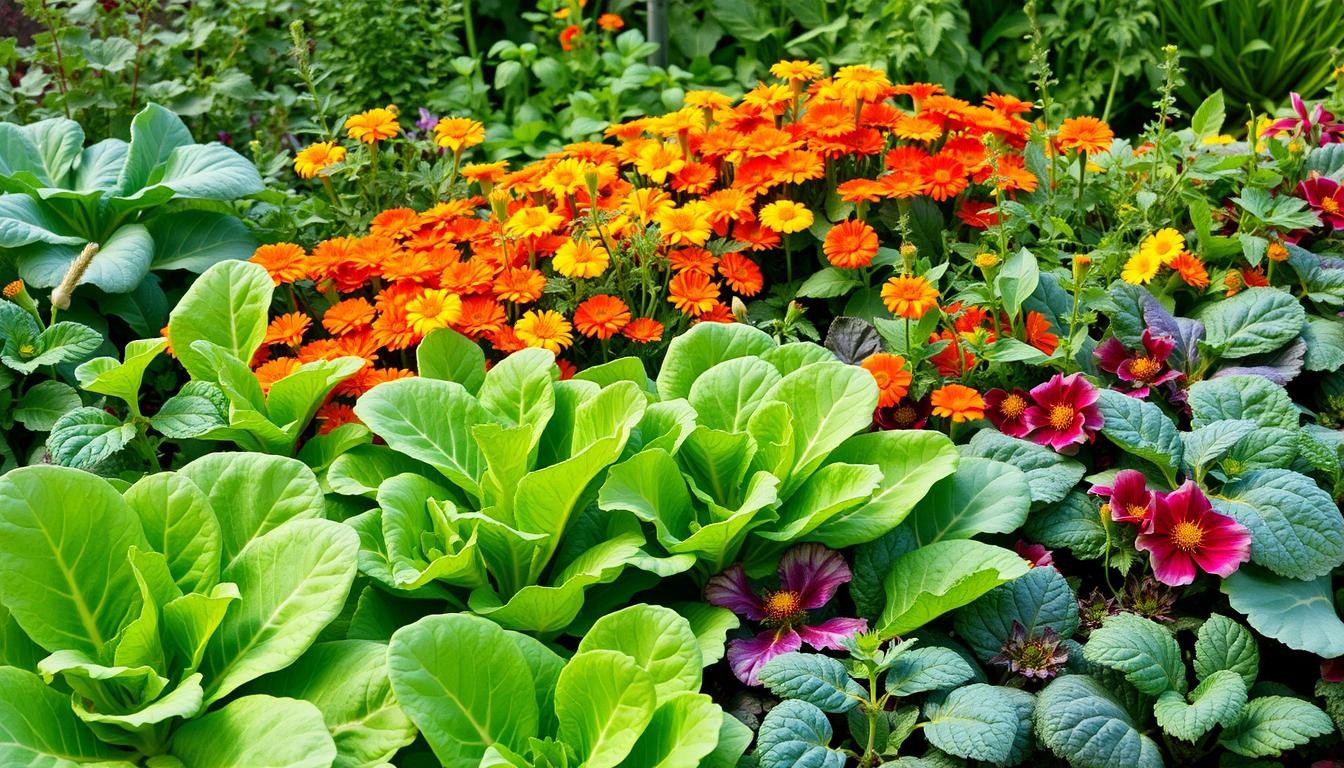As you step into your garden, the fresh, earthy aroma immediately invigorates your senses. You can almost taste the crispness of your homegrown spinach, a vegetable bursting with nutrients and perfect for those cooler days when comfort food calls. But have you ever wondered how to truly maximize your spinach yield? Companion planting may just hold the key to unlocking a thriving garden. By choosing the right companions for your spinach, you can enhance growth and protect your plants from pests, creating a harmonious ecosystem. In this guide, we’ll explore the best companion plants for spinach, all designed to help you optimize your garden like never before.
Key Takeaways
- Companion planting can significantly enhance spinach growth.
- Choosing compatible plants helps optimize garden health.
- Plants can provide natural pest control and improvement in soil quality.
- Understanding plant relationships is key to a successful garden.
- Harmonious plant pairings enrich the overall gardening experience.
What Are Companion Plants?
Companion plants are species that, when cultivated alongside each other, create beneficial relationships. This method of gardening, known as companion planting, enhances plant growth, deters unwanted pests, and encourages beneficial insects within your garden. By selecting the right companion plants for spinach, you can maximize your harvest and promote a healthier ecosystem.
The Benefits of Companion Planting
Understanding the benefits of companion planting reveals its impact on garden success. Some key advantages include:
- Repelling pests through strong scents emitted by certain plants.
- Attracting pollinators, which ensures effective fertilization of your crops.
- Improving nutrient availability in the soil, especially for nitrogen-loving plants like spinach.
Nitrogen-fixing legumes, for example, enrich the soil, supporting spinach’s growth while maintaining soil health.
How Companion Plants Work Together
The way companion plants work together forms an intricate web of benefits. Certain plants can naturally help each other by:
- Reducing competition for sunlight and nutrients.
- Providing shade for more delicate plants.
- Enhancing biodiversity, creating a resilient garden ecosystem.
This strategic combination allows for a reduction in synthetic fertilizers and pesticides, promoting a more sustainable gardening approach.
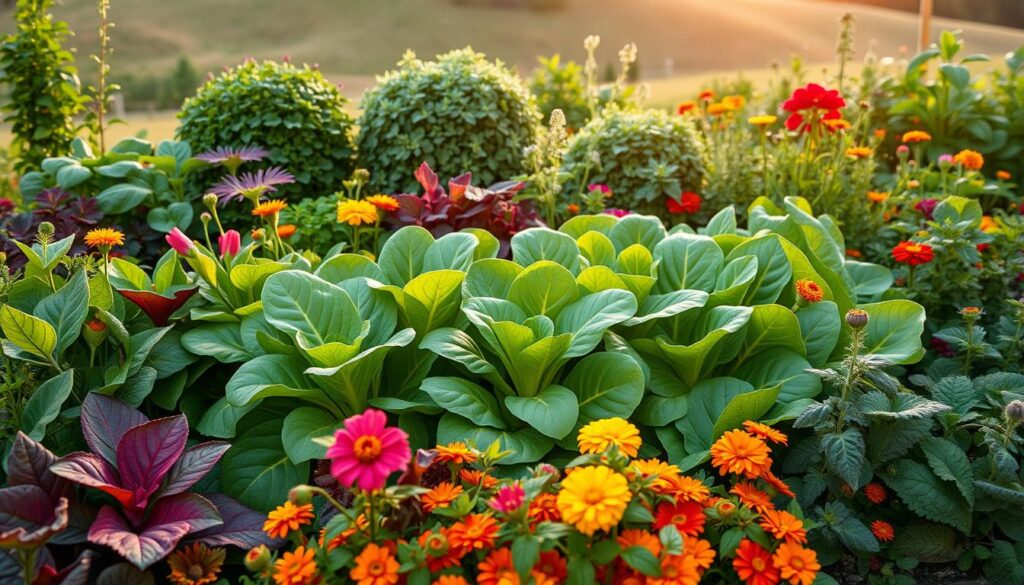
| Companion Plant | Benefit |
|---|---|
| Beans | Nitrogen-fixing to enrich soil for spinach |
| Basil | Repels pests and enhances flavor of spinach |
| Marigolds | Attract beneficial insects that prey on pests |
| Radishes | Help control root-eating pests |
Ideal Companions for Spinach
When establishing a thriving spinach garden, selecting the best vegetable companions for spinach can make all the difference. These ideal companions support spinach’s growth by providing beneficial shade, enhancing soil quality, or acting as natural pest deterrents. By incorporating specific plants, you can create a harmonious garden environment.
Top Companion Plants to Consider
Some of the most effective partners for spinach include:
- Radishes: These fast-growing plants not only enhance the growing space but also serve as a natural pest control method.
- Strawberries: They provide a shaded ground cover that helps retain soil moisture and improve conditions for spinach.
- Legumes: By fixing nitrogen in the soil, legumes like beans enhance nutrient availability, crucial for optimal spinach growth.
Criteria for Choosing Companions
When pursuing the best vegetable companions for spinach, certain criteria should guide your decisions. Consider the following:
- Nutrient Needs: Ensure that the nutritional demands of potential companions do not conflict with spinach.
- Growth Rates: Fast-growing plants, such as radishes, can optimize garden space and provide shelter for less robust spinach.
- Environmental Requirements: Match companion species that share similar light and water preferences for an efficient garden setup.
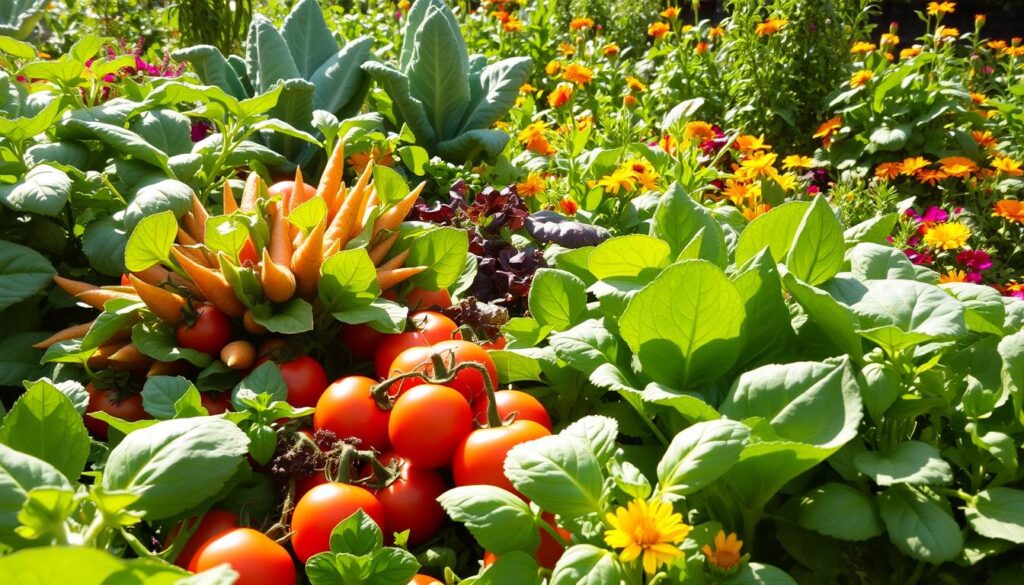
Herbs That Pair Well with Spinach
When considering spinach herb companions, two notable herbs are basil and oregano. Both not only enhance the flavor of dishes but also provide several benefits to spinach plants, making them ideal companions in your garden.
Basil: A Flavorful Match
Basil with spinach creates a delightful combination that many gardeners appreciate. This aromatic herb repels pests, particularly through its fragrant leaves that deter insects such as aphids. Growing basil alongside your spinach promotes a healthier environment while ensuring your harvest has an added burst of flavor.
Oregano: Aroma and Growth Benefits
The presence of oregano yields various benefits. This herb attracts beneficial predatory insects that naturally control pest populations, enhancing the overall health of your garden. Additionally, oregano benefits your garden by thriving in similar sunlight and moisture conditions as spinach, making them excellent partners in maximizing your gardening space.
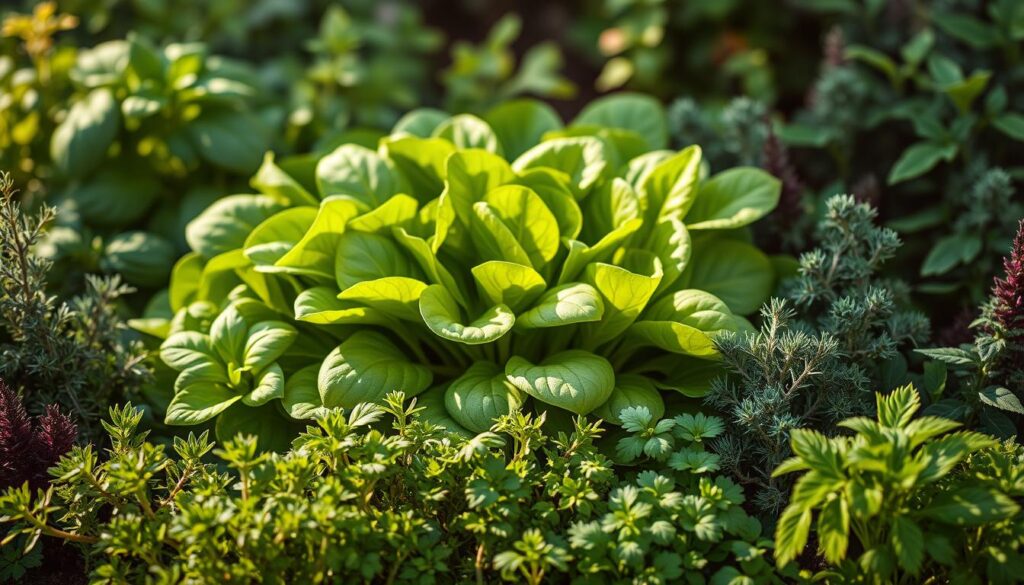
Vegetables That Support Spinach Growth
When cultivating spinach, selecting the right companion vegetables can significantly enhance growth and quality. Integrating vegetables for spinach like carrots and radishes promotes a thriving garden. These root vegetables not only occupy the soil but also improve the growing conditions for spinach.
Carrots: Enhancing Soil Conditions
Carrots with spinach create a beneficial relationship in the garden. Carrots aerate the soil as they grow and help improve its structure, allowing spinach roots to spread out more easily. This improved soil condition ultimately leads to healthier spinach plants, yielding better flavors and textures.
Radishes: Pest Control Allies
Radishes benefits extend beyond being a tasty addition to salads. Their rapid growth makes them excellent companions for spinach. When planted together, radishes can deter pests, particularly damaging insects like flea beetles. This natural pest control supports spinach health while maximizing your garden’s efficiency.
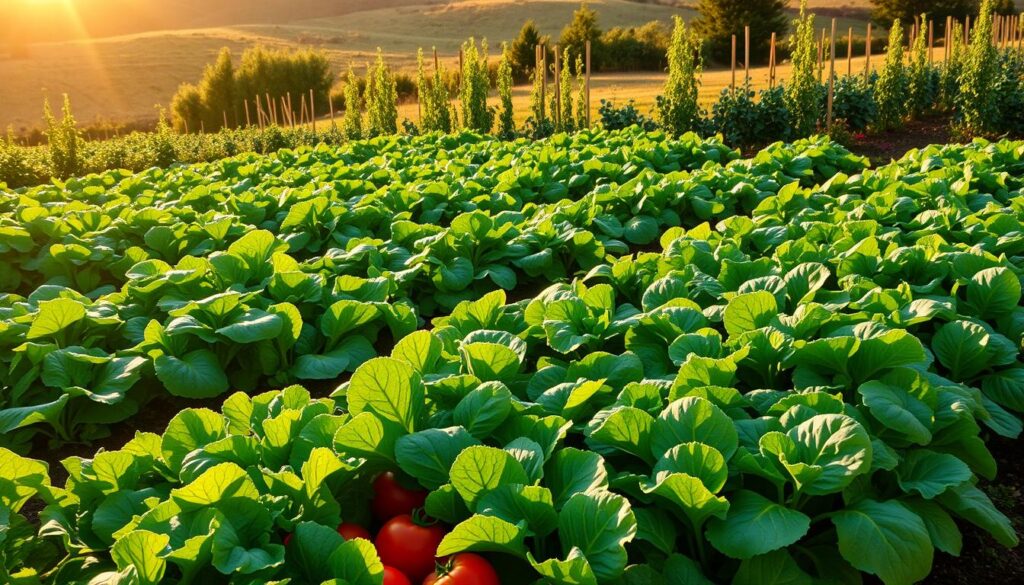
Flowers That Attract Beneficial Insects
Integrating flowers for beneficial insects into your garden can significantly enhance the overall health of your plants, especially spinach. These vibrant blooms serve a dual purpose: adding beauty to your garden while supporting the ecosystem. Two excellent choices are marigolds and nasturtiums.
Marigolds: Natural Pest Deterrents
Marigolds are celebrated for their remarkable pest-repelling abilities. Their strong scent deters a variety of harmful insects that might target your spinach. By planting marigolds and spinach together, you create a protective barrier that benefits both plants. The presence of marigolds encourages beneficial insects, such as ladybugs and lacewings, which prey on the pests threatening your crops. This synergy promotes a more productive garden and minimizes the need for chemical pest control.
Nasturtiums: Colorful Companions
Nasturtiums offer enticing nasturtiums benefits beyond their eye-catching appearance. These flowers act as a living mulch, helping retain soil moisture while suppressing weeds. Additionally, nasturtiums naturally attract aphids, drawing them away from your spinach plants. This distraction allows your spinach to thrive, ensuring plenty of healthy greens for your table. The combination of colorful nasturtiums and leafy spinach fosters a flourishing garden ecosystem where both plants can thrive.

Plants to Avoid Near Spinach
When planning your garden, awareness of which plants to avoid with spinach can make a significant difference. Some plants compete with spinach for essential nutrients and space, leading to potential challenges in growth and yield. Understanding which plants are considered incompatible companions will help ensure your spinach thrives.
The Dangers of Certain Companions
Certain plants can stunt your spinach’s growth when planted nearby. Notably, corn, potatoes, and fennel fall into the category of incompatible companions. Their high nutrient demands often overshadow the needs of spinach, resulting in deficient soil conditions. Consequently, spinach may end up with reduced vigor or even fail to grow properly.
Understanding Plant Compatibility
To achieve a flourishing garden, understanding the compatibility of various plants is essential. Why do some plants become incompatible companions? This often boils down to their growth habits, nutrient competition, and pest attraction. By avoiding the wrong neighbors, you can enhance the conditions for your spinach, improving its resilience and overall yield.
| Plant Type | Reason for Avoidance |
|---|---|
| Corn | High nutrient competition; can overshadow spinach |
| Potatoes | Competes for nutrients; may attract pests |
| Fennel | Allelopathic properties can hinder growth of spinach |
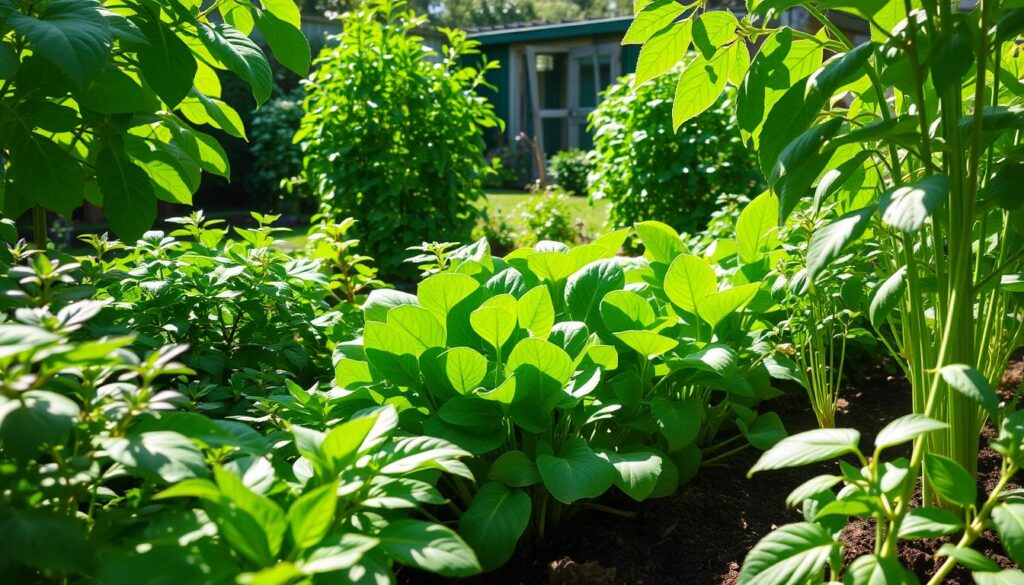
Tips for Planting Companion Plants
Successful companion planting involves thoughtful consideration of spacing and timing to ensure that your spinach plants flourish. Recognizing the significance of these aspects can make a remarkable difference in your garden’s health and productivity.
Spacing and Arrangement
When it comes to planting tips for spinach, one crucial factor is companion planting spacing. Ensure that you leave sufficient room between each plant to allow for sunlight penetration and air circulation. This reduces the chance of disease and promotes healthy growth. Organize your plants in a way that supports their growth patterns. For instance, placing taller plants on the northern side protects shorter ones like spinach from shading.
Timing Your Planting
The timing for companion plants plays a vital role in your garden’s success. Start planting early to take advantage of the growing season. Intercropping spinach with faster-growing plants like radishes is an effective strategy. These radishes mature quickly and can fill gaps while spinach develops. This approach maximizes the yield from your garden, ensuring that you make the best use of your space and resources.
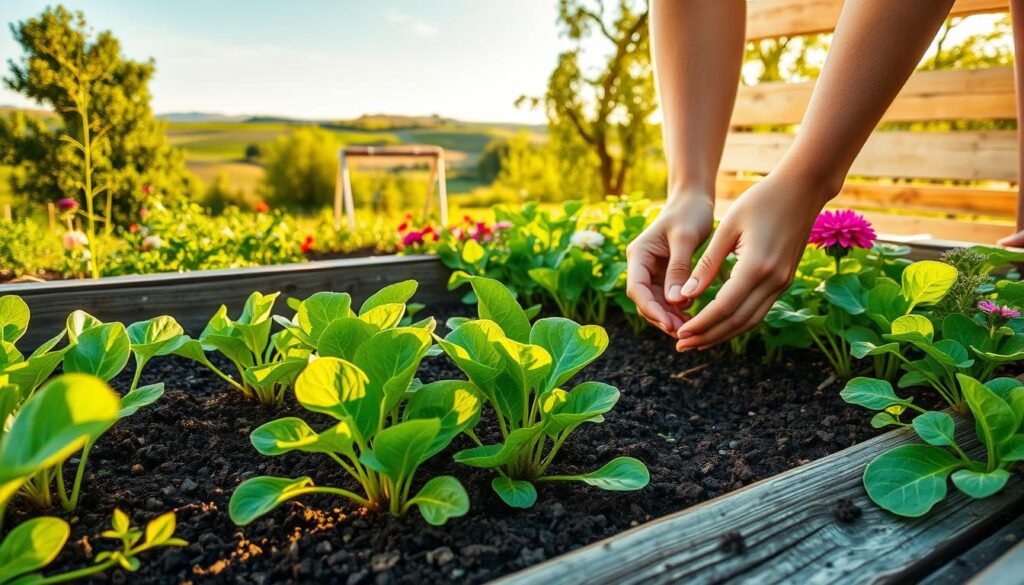
Soil Considerations for Companion Gardens
Understanding the soil needs for spinach is essential for achieving healthy growth and a bountiful harvest. Spinach thrives in rich, well-draining soil that is packed with necessary nutrients. One way to enhance the nutrient requirements of spinach is by strategically selecting companion plants. These companions can significantly improve not only the health of spinach but also the overall quality of the soil.
Nutrient Needs of Spinach
Spinach requires a generous amount of nitrogen, phosphorus, and potassium to flourish. To meet these nutrient needs, adding organic matter and compost to the soil is beneficial. Companion plants that fix nitrogen, such as legumes, can actively contribute to the soil health. This interaction aids in providing spinach with a steady supply of essential nutrients throughout its growing cycle.
How Companions Affect Soil Quality
Choosing the right soil quality companions can make a notable difference. Certain plants can break up compacted soil, facilitating better air and moisture flow. This process encourages healthy root development for spinach. Additionally, these companions may enhance soil fertility through their natural growth processes. In turn, these changes can lead to improved nutrient availability, which ultimately supports robust spinach growth.
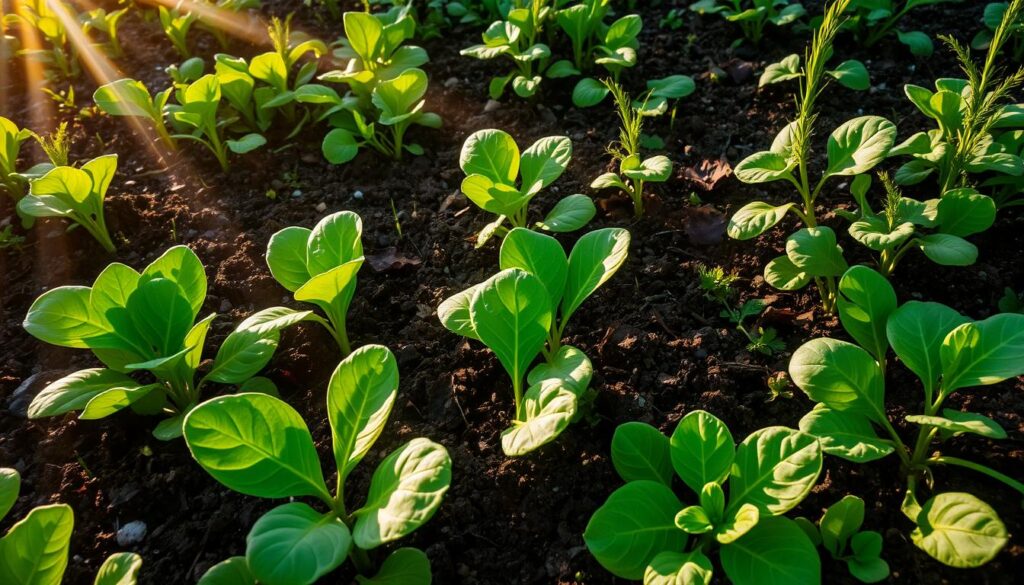
| Companion Plant | Nutrient Contribution | Soil Quality Improvement |
|---|---|---|
| Beans | Fix nitrogen | Improves soil structure |
| Clover | Fix nitrogen | Enhances organic matter |
| Radishes | Breaks up soil | Improves drainage |
| Borage | Mineral accumulator | Increases biodiversity |
Watering Strategies for Mixed Gardens
Effective watering is crucial for a thriving mixed garden, especially when growing spinach alongside its companions. You need to tailor your watering spinach garden practices to accommodate the specific needs of each plant. Consistency is vital, as spinach prefers moist soil while some companion plants might tolerate drier conditions.
Best Practices for Spinach and Companions
Applying the right irrigation tips ensures all plants benefit from adequate hydration. Consider the following best practices:
- Group plants with similar water requirements together to streamline your watering routine.
- Use mulch to retain moisture, reducing the frequency of watering while preventing weed growth.
- Water early in the morning or late in the evening to minimize evaporation and allow for better absorption.
- Check soil moisture regularly, focusing on the spinach; this can prevent overwatering or underwatering.
Common Mistakes to Avoid
Being mindful of common pitfalls can enhance your watering strategy. The following mistakes can significantly impact your garden:
- Over-fertilizing your plants can lead to excessive water retention in the soil, stressing your spinach.
- Planting too closely can lead to competition for water, causing certain plants to struggle.
- Ignoring the specific moisture needs of each companion plant can result in water stress, particularly for sensitivity-prone crops like spinach.
- Neglecting to adjust your watering schedule as the weather changes may affect overall plant health.
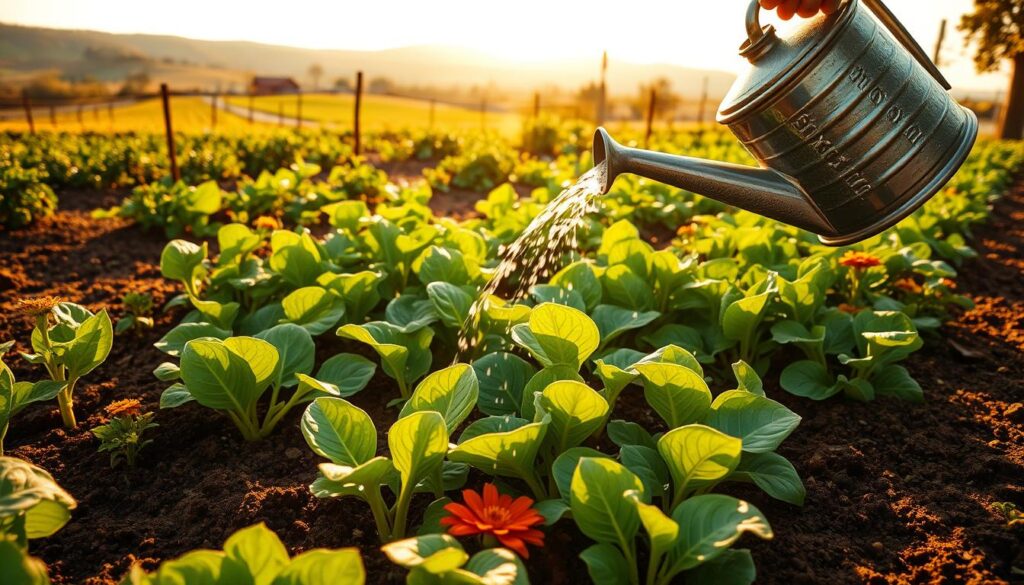
Seasonal Companion Planting
Understanding the timing of your planting can significantly enhance your success with spinach. Seasonal planting for spinach involves strategic choices based on the weather and growth cycles. In spring and fall gardening, you have the opportunity to maximize your garden’s productivity by choosing the right companions that thrive in these seasons.
What to Plant in Spring
As temperatures warm up, spring offers a chance to pair spinach with cool-weather companions. Ideal plants include:
- Peas: They create a supportive structure for climbing while enriching the soil.
- Radishes: Quick-growing and can help deter pests.
- Lettuce: Both can share similar growing conditions, ensuring a lush harvest.
Preparing for Fall Planting
As the weather starts to cool, you should consider other companions that can withstand lower temperatures. Root vegetables like carrots and beets thrive during this period, making them great companions. Their growth can enhance soil structure while allowing successful seasonal planting for spinach.
| Season | Recommended Companion Plants | Benefits |
|---|---|---|
| Spring | Peas, Radishes, Lettuce | Soil enrichment, pest deterrence, space optimization |
| Fall | Carrots, Beets, Garlic | Improved soil structure, extended harvest, enhanced flavor |

Harvesting Spinach and Its Companions
Knowing when to start harvesting spinach is essential for maximizing both flavor and yield. The ideal time arrives when the leaves are vibrant and tender, typically around 30 to 40 days after planting. This stage helps ensure that your spinach achieves its maximum potential, so pay close attention to its development.
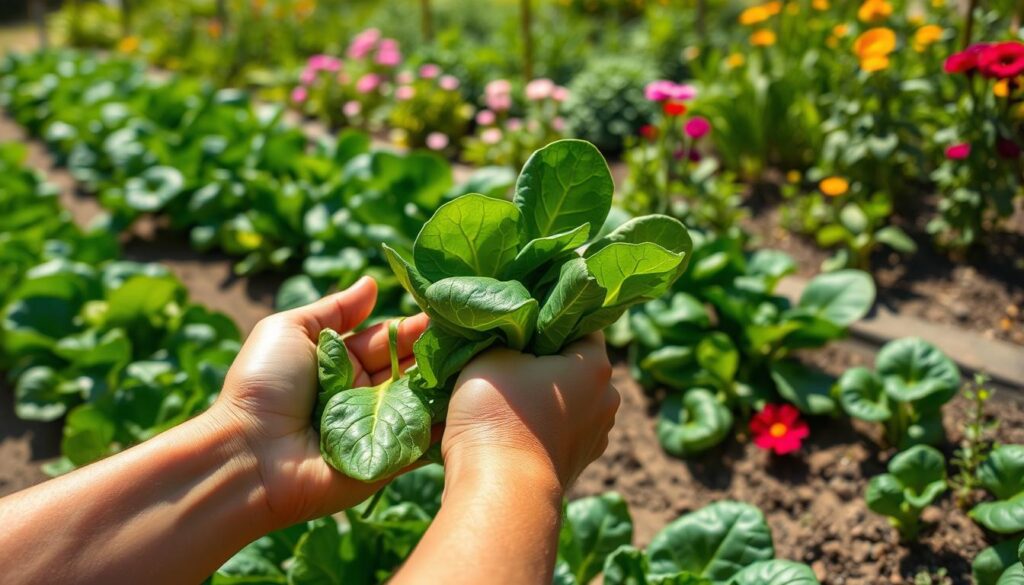
Signs It’s Time to Harvest
Look for specific indicators that reveal when your spinach is ready for harvesting. Key signs include:
- The leaves are large, crisp, and bright green.
- Young leaves have reached about 4 to 6 inches in length.
- Plants begin to bolt, which means they’re flowering—harvest before this happens.
How to Care for Your Garden Post-Harvest
Post-harvest care plays a vital role in maintaining your garden’s health and productivity. Focus on the following:
- Ensure the soil remains nutrient-rich by adding organic matter or compost.
- Keep the area weed-free to prevent competition for resources.
- Consider companion plants that might still be growing; harvesting spinach strategically can help preserve their health.
- Water regularly but avoid waterlogging, as it can affect both spinach and other companions.
Implementing these spinach gardening tips can support your garden’s success for future plantings. Staying attentive to post-harvest care fosters a thriving environment for your plants.
Success Stories from Gardening Enthusiasts
Many gardeners have shared their gardening experiences, highlighting successful companion planting techniques that worked well for them. These stories often feature the delightful results of pairing spinach with other plants, providing valuable insights that can inspire your own gardening journey.
Personal Experiences with Companion Planting
Gardening enthusiasts frequently reflect on their triumphs when combining spinach with beneficial companions. Some have noted that planting spinach alongside radishes not only helped with pest control, but also improved their overall yield. Others share how including herbs like basil elevated the flavors of their spinach dishes. These personal anecdotes reveal how successful companion planting can enhance not only growth but also the enjoyment of your harvest.
Tips and Tricks from the Community
You can gain a wealth of knowledge from the tips from gardeners who have navigated the challenges of companion planting. For instance, checking soil compatibility and watering needs before planting can significantly improve outcomes. Many gardeners recommend starting small and gradually expanding your companion planting efforts once you find the combinations that work best for your space. Embrace the shared wisdom, as learning from others can enrich your gardening experiences tremendously.
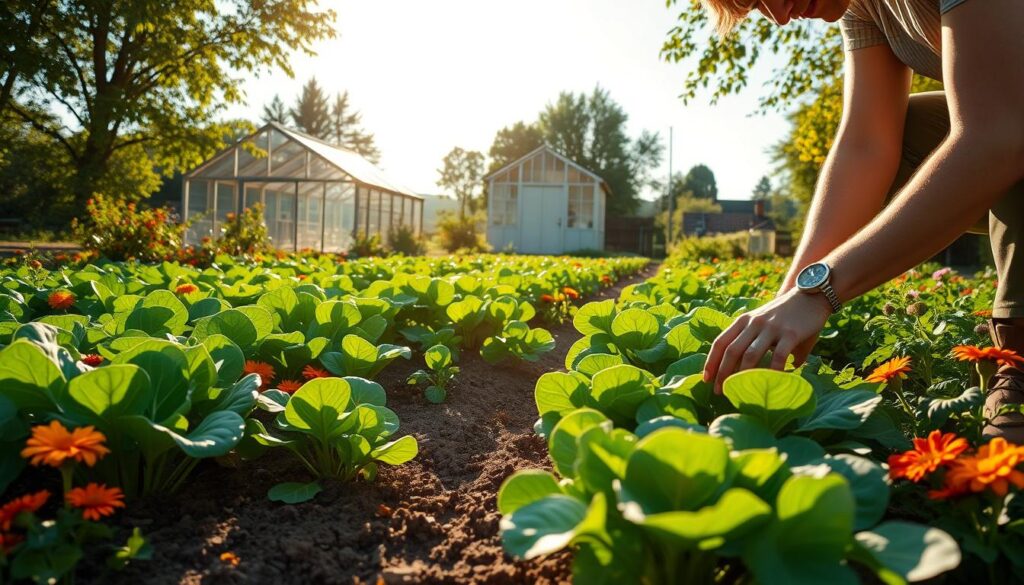
Troubleshooting Common Issues
Gardening can present various challenges, and spinach plants are not immune to common gardening issues. You might notice signs such as yellowing leaves, stunted growth, or even pest infestations. Identifying these problems early helps in effectively managing them, ensuring your garden remains healthy.
Identifying Problems in Your Garden
Monitoring your spinach plants closely allows you to catch potential issues. Common indicators of stress include:
- Yellowing leaves: Often a sign of nutrient deficiency, particularly nitrogen.
- Stunted growth: This may be due to overcrowding or inadequate soil conditions.
- Pest infestations: Look for signs of chewing or holes in leaves, indicating pests such as aphids or caterpillars.
Solutions for Better Growth
Once you’ve identified the issues, implementing effective growth solutions can restore your spinach plants to optimal health. Here are some strategies to consider:
- Adjust watering schedules to prevent over or under watering, which can lead to root problems.
- Conduct a soil test to determine nutrient levels and apply appropriate fertilizers.
- Introduce beneficial insects like ladybugs to manage pest populations naturally.
- Practice crop rotation to avoid soil depletion and control pest cycles.
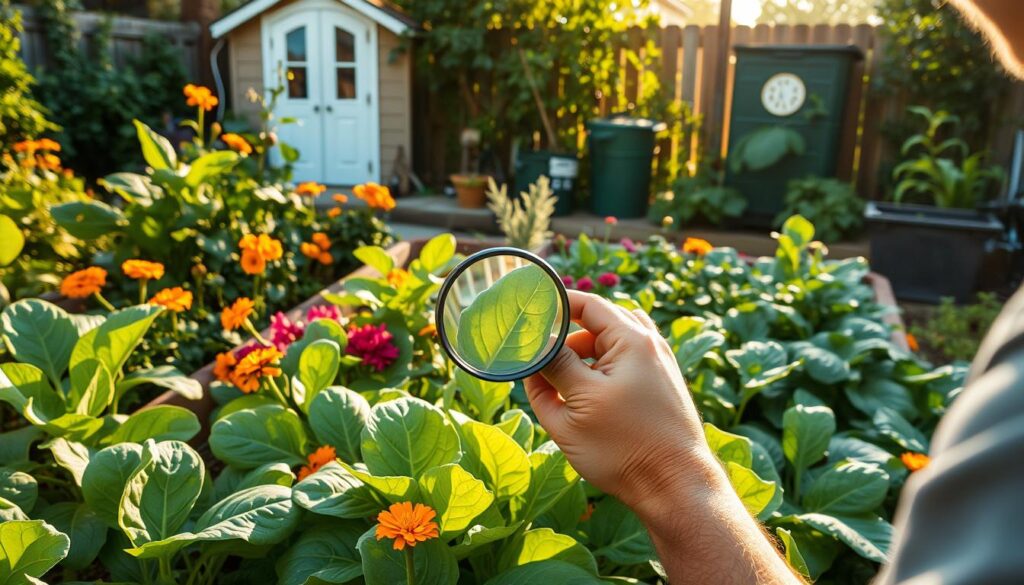
Resources for Further Learning
Expanding your knowledge about companion planting can significantly enhance your gardening experience. A variety of learning resources exist, including books, articles, and engaging platforms within gardening communities. These resources provide both information and inspiration, allowing you to connect with fellow gardening enthusiasts and exchange valuable insights.
Books and Articles on Companion Planting
Companion planting books offer in-depth guidance on selecting the best plant pairings. Many of these publications delve into the science behind plant relationships and effective growth strategies. Articles from reputable gardening websites often address specific topics, presenting practical advice that can easily be implemented in your garden. Some notable titles include:
- Carrots Love Tomatoes by Louise Riotte
- The Companion Planting Handbook by David D. C. Curtis
- Botany in a Day by John M. Holland
Online Communities and Gardening Groups
Joining online gardening communities can provide further learning opportunities and a support network. Platforms such as gardening forums and social media groups allow for sharing experiences, asking questions, and receiving tips from seasoned gardeners. Participating in these communities can enhance your understanding of companion planting through real-life applications and success stories. Local gardening clubs or workshops may also offer invaluable resources to learn directly from experts and fellow enthusiasts.

Final Thoughts on Companion Plants for Spinach
In conclusion, the benefits of companion plants are abundant, particularly when it comes to spinach planting. By partnering spinach with herbs like basil or vegetables such as carrots, you can significantly boost your garden’s yield. The synergistic relationships formed through companion planting not only deter pests but also enhance soil quality, creating a flourishing environment for your crops.
Now is the perfect time to encourage gardening and experiment with different plant combinations in your garden. Whether you are a seasoned gardener or a beginner, trying out various companions can lead to an enriching gardening experience. Each successful pairing not only reaffirms the advantages of companion planting but also showcases the wonders of nature working together.
Embracing companion planting practices allows you to contribute to environmental sustainability while producing healthy and thriving plants. So gather your seeds, plan your garden layout, and discover the transformative benefits of companion plants for your spinach. Happy gardening!
